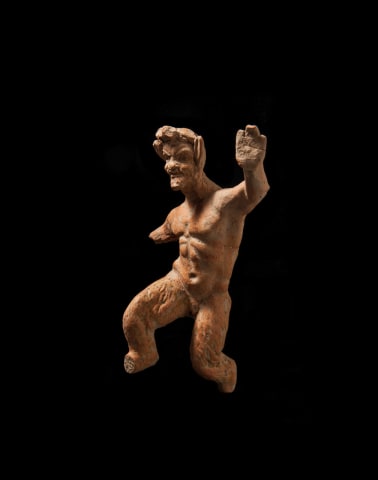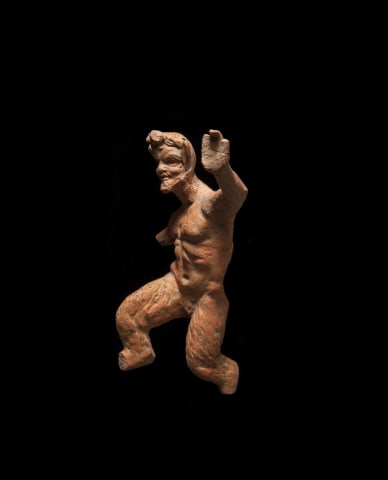Hellenistic statuette of Pan dancing, Probably Sicily, 2nd-1st century BC
Terracotta
Height: 15.2cm
10307 IVP
%3Cdiv%20class%3D%22title_and_year%22%3E%3Cem%3EHellenistic%20statuette%20of%20Pan%20dancing%3C/em%3E%2C%20%3Cspan%20class%3D%22title_and_year_year%22%3EProbably%20Sicily%2C%202nd-1st%20century%20BC%3C/span%3E%3C/div%3E%3Cdiv%20class%3D%22medium%22%3ETerracotta%3C/div%3E%3Cdiv%20class%3D%22dimensions%22%3EHeight%3A%2015.2cm%3C/div%3E%3Cdiv%20class%3D%22price%22%3E%C2%A3%204%2C800%3C/div%3E
The demi-god is deftly modelled by hand, with strong musculature and a dynamic pose, five large holes running around his hairline for the addition of fresh flowers. His legs are...
The demi-god is deftly modelled by hand, with strong musculature and a dynamic pose, five large holes running around his hairline for the addition of fresh flowers. His legs are that of a goat, his head with animalistic features including tall ears, a goatee and pointed eyebrows. He has thick hair and a wide nose. His left arm raised, torso slightly twisted and right knee lifted. The lower legs and right arm broken away, the fingers of the left hand lost.
This figure likely comes from Sicily, and was part of a genre scene where several figures formed a dynamic sculptural group.
Provenance
William Froelich, New York, USA; acquired 1980s
Literature
For a discussion on dancing satyrs see Fritz Weege, Der
Tanz in der Antike (Halle, 1926), pp.91-97. For the figure
see Margarete Bieber, The Sculpture of the Hellenistic Age (New York, 1961), fig.449



